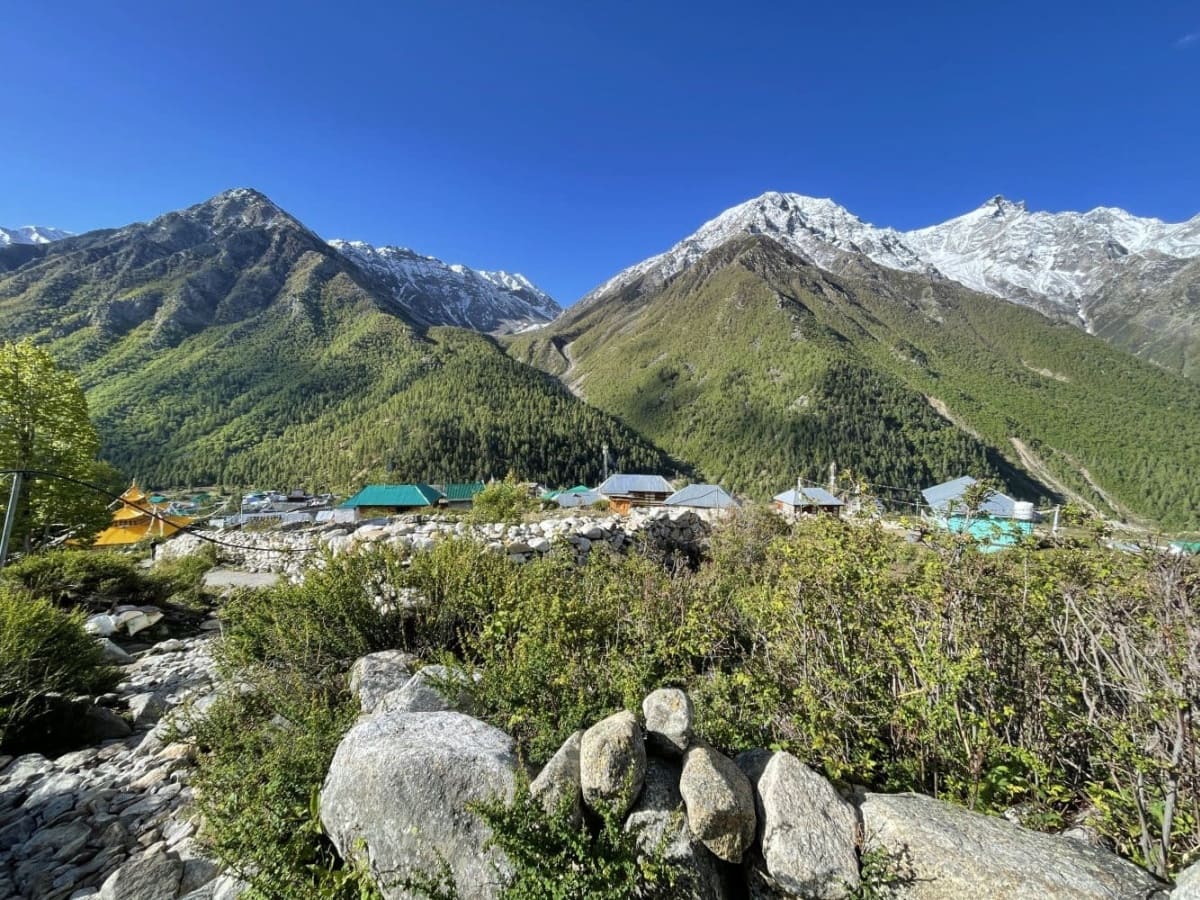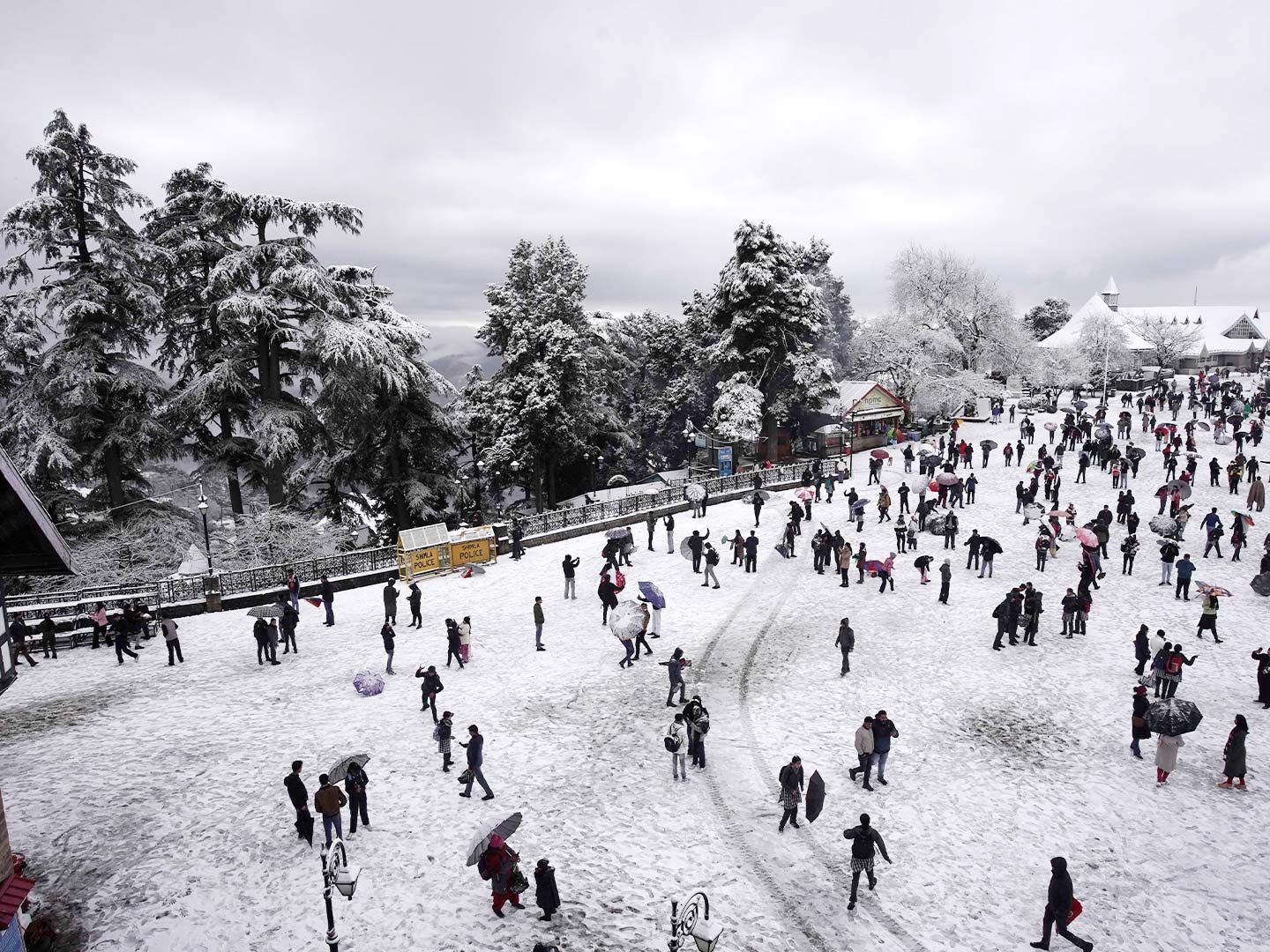Chitkul
Published on March 28, 2025
Nestled in the serene embrace of the Baspa Valley, Chitkul stands as one of India's most picturesque and unspoiled destinations. Located in the Kinnaur district of Himachal Pradesh, this quaint village is not just a place on the map but a living testament to nature’s grandeur and cultural heritage. As the last inhabited village near the Indo-Tibetan border, Chitkul offers a unique blend of pristine landscapes, traditional wooden architecture, and a deep-rooted connection to local customs. Whether you're an avid trekker, a photographer chasing breathtaking vistas, or a traveler seeking solace away from urban chaos, Chitkul promises an experience that stays etched in your memory.
The journey to Chitkul itself is nothing short of magical. Winding roads surrounded by towering snow-clad peaks, lush green meadows, and the gurgling Baspa River create an awe-inspiring backdrop. Known for its untouched beauty and tranquil ambiance, Chitkul is often referred to as the "Gateway to the Himalayas." This remote paradise has remained relatively offbeat, making it a haven for those who crave authenticity over commercialization. Let us delve deeper into what makes Chitkul such a remarkable destination and why it deserves a spot on every traveler’s bucket list.
The Enchanting Beauty of Chitkul: A Visual Feast
Why Chitkul Stands Out Among Himalayan Destinations
When it comes to natural splendor, few places can rival the charm of Chitkul Village . Situated at an elevation of approximately 3,450 meters (11,320 feet), this tiny hamlet boasts panoramic views of the Greater Himalayas, including majestic peaks like Rakshas Thal and Kinner Kailash. The sight of these snow-capped giants looming over the valley is enough to leave even seasoned travelers speechless.
One of the standout features of Chitkul is its vibrant seasonal transformation. In spring, the entire region bursts into life with blooming wildflowers and lush greenery. Summer brings milder temperatures, perfect for exploring the outdoors, while autumn paints the landscape in hues of gold and crimson. Even during winter, when heavy snow blankets the village, Chitkul exudes a surreal charm that feels almost otherworldly.
The Iconic Mathi Temple: A Spiritual Haven
At the heart of Chitkul lies the iconic Mathi Temple , dedicated to the goddess Mathi Devi. This ancient shrine is not only a spiritual hub for locals but also a symbol of the rich cultural heritage of the region. Surrounded by prayer flags fluttering in the wind, the temple offers a serene atmosphere where visitors can pause and reflect amidst their adventures. Legend has it that the goddess protects the village and its inhabitants, adding a mystical allure to this sacred site.
The architecture of the Mathi Temple reflects traditional Kinnauri craftsmanship, characterized by intricately carved wooden pillars and vibrant murals. It serves as a reminder of the harmonious coexistence between nature and human creativity in Chitkul. For many travelers, visiting the temple becomes a highlight of their trip, offering both spiritual fulfillment and a glimpse into local traditions.

Baspa River: The Lifeline of Chitkul
Flowing gracefully through the Baspa Valley, the Baspa River plays a pivotal role in shaping the landscape and lifestyle of Chitkul. Its crystal-clear waters are fed by glacial streams, creating a mesmerizing contrast against the rugged terrain. Visitors often find themselves drawn to the riverbanks, whether for a peaceful stroll, photography sessions, or simply soaking in the tranquility.
For adventure enthusiasts, the Baspa River presents opportunities for activities like river crossing and light trekking along its banks. However, the true magic of the river lies in its ability to evoke a sense of calm and wonder. Watching the sun dance on its shimmering surface or listening to its gentle flow is an experience that words struggle to capture.
Cultural Riches of Chitkul: A Glimpse into Kinnauri Traditions
Kinnauri Architecture: Where Art Meets Nature
One cannot talk about Chitkul without marveling at its distinctive architectural style. The village is dotted with traditional wooden houses adorned with intricate carvings and vibrant motifs. These structures are built using locally sourced materials like deodar wood and stone, ensuring they blend seamlessly with the surrounding environment.
Each house in Chitkul tells a story—of resilience, craftsmanship, and community spirit. The flat roofs, designed to withstand heavy snowfall, double as storage spaces for fodder and crops. Inside, cozy interiors feature earthen stoves called bukharis that provide warmth during harsh winters. Exploring these homes offers a rare insight into the daily lives of the villagers, whose hospitality knows no bounds.

Festivals and Celebrations: Vibrant Reflections of Culture
Life in Chitkul revolves around festivals that celebrate nature, agriculture, and spirituality. One of the most significant events is Losar , the Tibetan New Year, which marks the beginning of the agricultural cycle. During this time, the entire village comes alive with music, dance, and elaborate rituals. Locals dress in colorful traditional attire, and monasteries host special prayers to invoke blessings for prosperity.
Another notable festival is Halda , celebrated to honor the deity of fire. Villagers gather around bonfires, chanting hymns and performing folk dances under starlit skies. Participating in these celebrations allows travelers to immerse themselves in the rich tapestry of Kinnauri culture, forging connections that transcend language barriers.
Local Cuisine: A Taste of Simplicity
No visit to Chitkul is complete without savoring its delicious yet simple cuisine. Staple dishes include siddu (steamed bread stuffed with walnuts or poppy seeds), aktori (a buckwheat pancake), and madra (a lentil-based curry cooked with yogurt and spices). These hearty meals are prepared using locally grown ingredients and reflect the resourcefulness of the villagers in adapting to high-altitude living.
Visitors staying at homestays or campsites often have the opportunity to participate in cooking sessions, learning age-old recipes passed down through generations. Sharing a meal with the locals is more than just dining—it’s an invitation to become part of their family.

Adventure Awaits: Trekking Trails Around Chitkul
Chitkul to Rakshas Thal Trek: A Journey Through Time
For trekkers, the Chitkul to Rakshas Thal Trek is a dream come true. This moderate-level trail takes you through some of the most stunning alpine meadows and dense forests in the region. Along the way, you’ll encounter diverse flora and fauna, including rare species of birds and medicinal plants.
Rakshas Thal, a high-altitude lake surrounded by towering peaks, serves as the perfect endpoint for this trek. According to local legends, the lake was once home to a demon (rakshasa ), lending it an air of mystery. Camping by the lakeside under a blanket of stars is an experience that words fail to describe adequately.
Exploring Beyond: Other Treks in the Region
While the Chitkul to Rakshas Thal Trek steals the limelight, there are several other trails worth exploring. The Chitkul to Sangla Trek offers a shorter yet equally rewarding route, passing through apple orchards and terraced fields. For those seeking a challenge, the Kinner Kailash Circuit provides a rigorous multi-day expedition with breathtaking views of the sacred peak revered by Hindus.
Trekking in Chitkul is not just about physical endurance; it’s about connecting with nature and discovering hidden corners of the Himalayas that remain untouched by modernity. Each step reveals a new facet of the region’s beauty, leaving you humbled and inspired.

Practical Tips for Travelers: How to Make the Most of Your Visit
Best Time to Visit Chitkul
The ideal time to explore Chitkul depends on your preferences and tolerance for varying weather conditions. Summer (April to June) is undoubtedly the best season for first-time visitors, as the weather remains pleasant, and all trekking routes are accessible. Autumn (September to November) is another excellent time, offering clear skies and stunning fall colors.
Winter (December to February) transforms Chitkul into a snowy wonderland, attracting adventurous souls willing to brave sub-zero temperatures. However, note that road access may be limited due to heavy snowfall, and accommodations might be scarce.
How to Reach Chitkul
Reaching Chitkul requires careful planning, especially if you’re traveling from major cities like Delhi or Shimla. The nearest airport is Bhuntar (Kullu), approximately 200 kilometers away. From there, you can hire a taxi or take a shared cab to Chitkul via Rampur Bushahr and Sangla.
Alternatively, you can opt for a train journey to Shimla followed by a scenic drive through the Sutlej Valley. While public transport options exist, hiring a private vehicle ensures greater flexibility and comfort.
Accommodation Options in Chitkul
Chitkul offers a range of accommodation choices catering to different budgets. Homestays run by local families provide an authentic experience, allowing you to interact closely with the villagers. For those seeking luxury, boutique hotels and eco-friendly resorts offer modern amenities without compromising on the rustic charm.
Camping is another popular option, with several operators organizing tented stays near the Baspa River. Imagine falling asleep to the sound of flowing water and waking up to the sight of snow-capped peaks—it doesn’t get better than this!
Essential Packing List
To ensure a smooth and enjoyable trip, pack wisely based on the season and activities planned. Some must-haves include:
- Warm clothing (jackets, thermals, gloves, and woolen caps)
- Sturdy trekking shoes
- Sunglasses and sunscreen
- First-aid kit
- Camera for capturing memories
- Reusable water bottle

Frequenlty Asked Question About Chitkul
Where is Chitkul located and why is it famous?
Chitkul is the last inhabited village near the Indo-Tibetan border in Himachal Pradesh’s Kinnaur district. Famous for its untouched beauty, apple orchards, and the Baspa River, it’s often called "India’s Last Village" before the Tibet border.
What is the best time to visit Chitkul?
The ideal time is May to October when the weather is pleasant and roads are accessible. Winters (November-April) bring heavy snowfall, often blocking roads. Monsoons (July-August) can trigger landslides.
Is an Inner Line Permit (ILP) required for Chitkul?
Yes! Indian citizens need an Inner Line Permit (ILP) to visit Chitkul, issued at Reckong Peo or Shimla. Foreign nationals require a Protected Area Permit (PAP).
How do I reach Chitkul from Delhi?
The route is Delhi → Shimla → Rampur → Sangla → Chitkul (550 km, 14-16 hrs). Buses and shared jeeps are available from Shimla/Rampur to Sangla, then another taxi to Chitkul.
What are the must-visit places in Chitkul?
-
Baspa River – Crystal-clear waters perfect for photography
-
Chitkul Village – Traditional Kinnauri houses & Buddhist influence
-
Mathi Temple – Ancient wooden temple with intricate carvings
-
Rakchham-Chitkul Trek – A scenic short trek
Are there ATMs or mobile networks in Chitkul?
No ATMs—withdraw cash in Sangla or Reckong Peo. BSNL and Airtel work intermittently; expect no internet most of the time.
What kind of accommodation is available in Chitkul?
Basic homestays and guesthouses are available, with limited amenities. Camping is possible near the Baspa River but requires prior permission.
Can I visit Chitkul in winter?
Only if you’re prepared for extreme cold and road closures. December-February sees heavy snowfall, making access difficult. Some homestays remain open but confirm in advance.
Is Chitkul safe for solo travelers?
Yes, but due to its remote location, it’s better to travel in daylight and inform someone about your plans. Locals are friendly, but medical facilities are limited.
What should I pack for a trip to Chitkul?
-
Warm clothes (even summers get chilly at night)
-
Sturdy shoes for walking on rocky terrain
-
Power bank & torch (frequent power cuts)
-
Cash (no card payments accepted)
-
Basic medicines (limited pharmacies)


